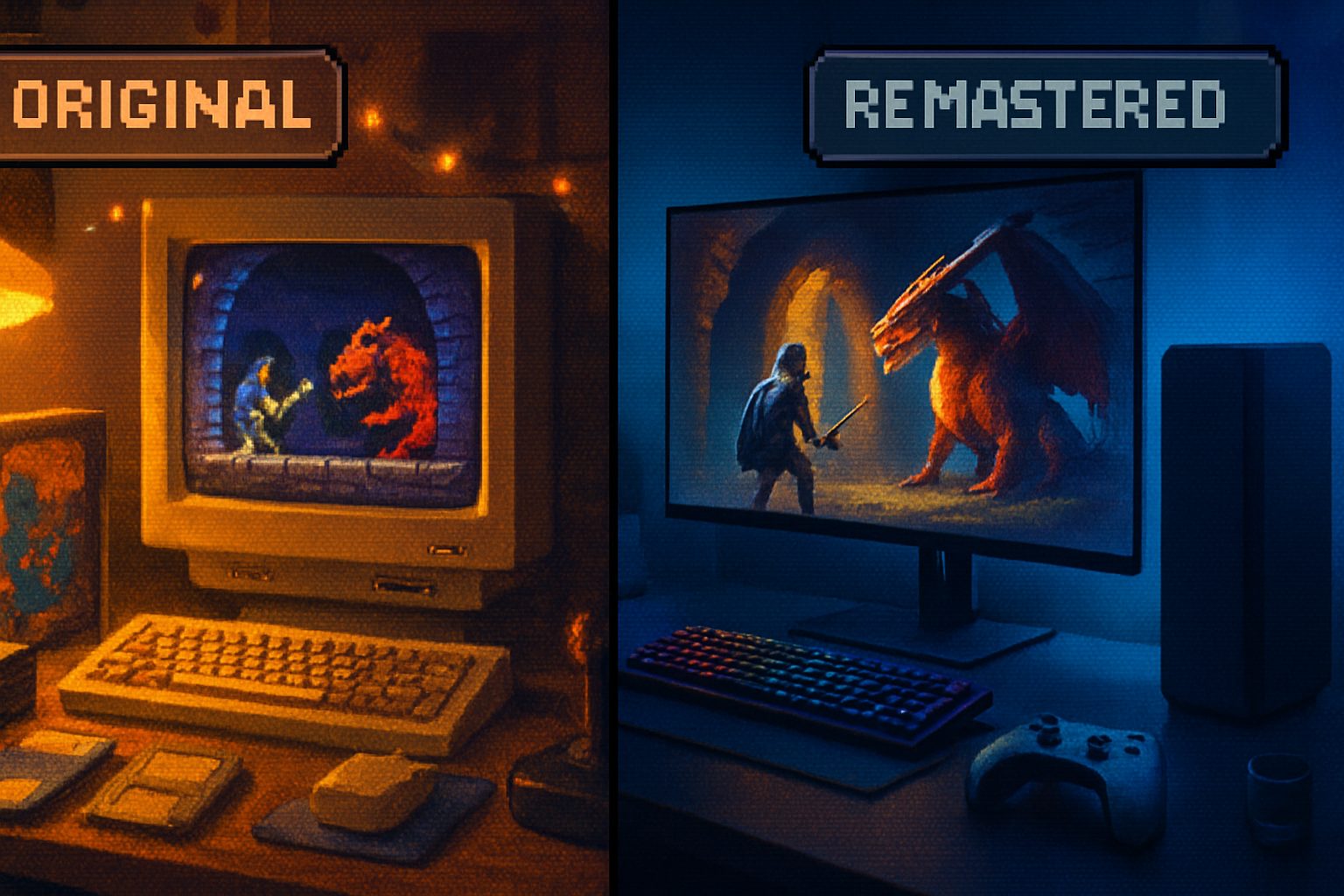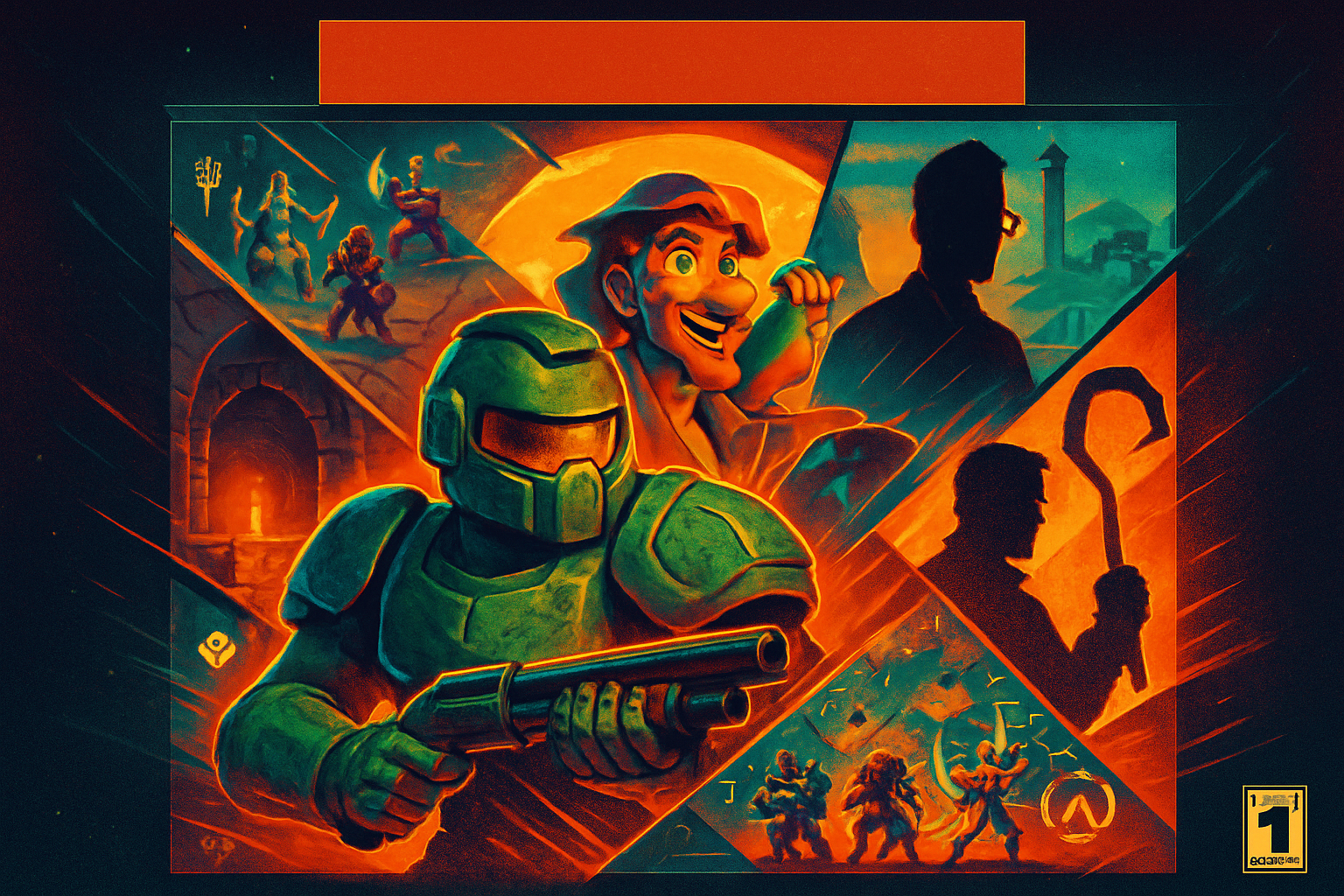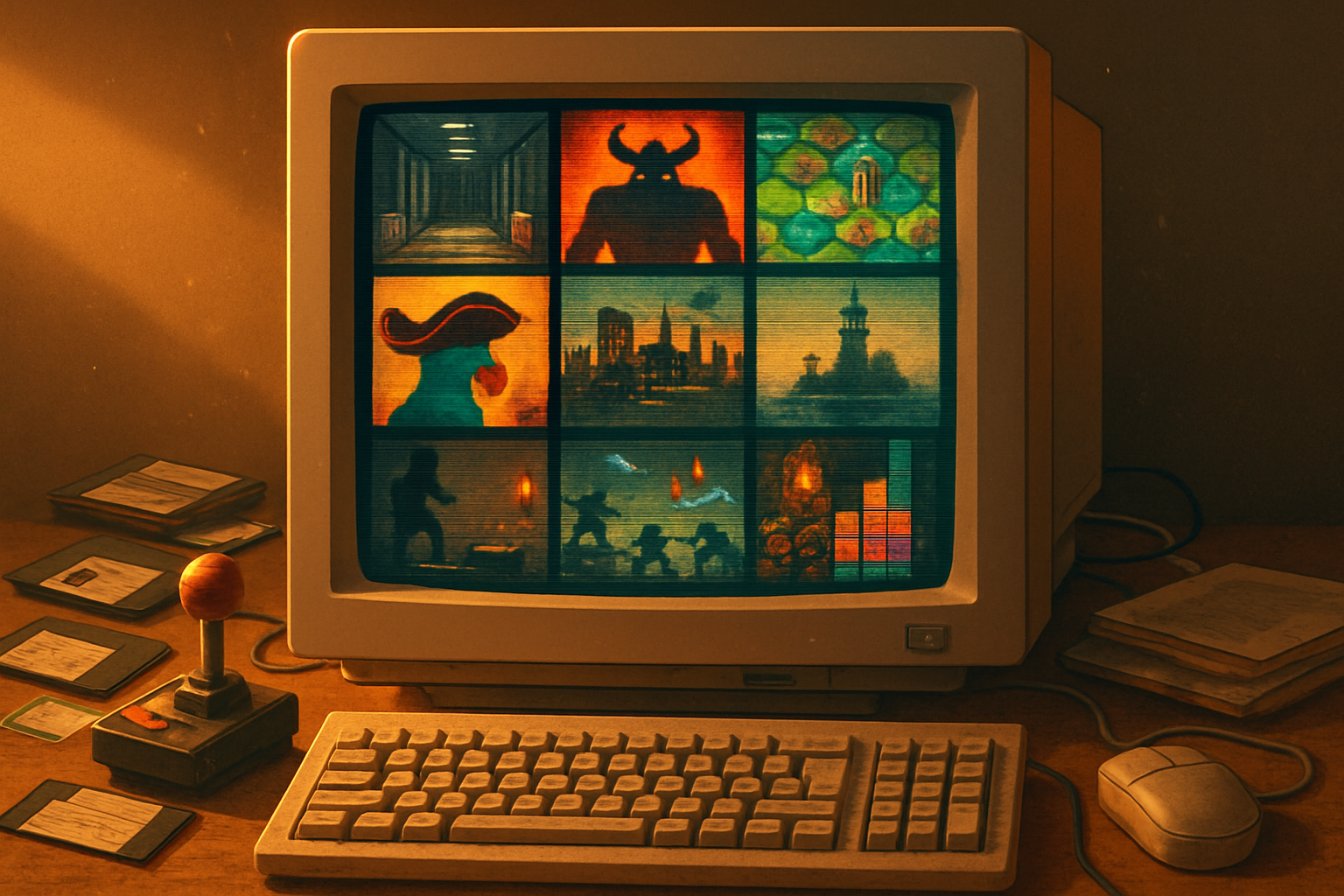· 6 min read
Retro vs. Remastered: Comparing Classic PC Games with Their Modern Counterparts
A head-to-head look at classic PC games and their remastered counterparts - what modern updates get right, where they stumble, and how preservation, nostalgia and community shape the debate.

Intro
Remasters and modern adaptations of classic PC games are everywhere: lovingly polished re-releases, full-blown remakes, and sometimes awkward attempts to “translate” an old design for modern hardware. Are these updates preserving history - or rewriting it? This article breaks down the key trade-offs, examines concrete case studies, and offers a framework for deciding when a remaster helps (or harms) a classic.
What do we mean by “retro,” “remaster,” and “remake”?
- Retro/classic - the original release - often with era-specific graphics, UI, and mechanics.
- Remaster - updates to visuals, audio and compatibility while aiming to preserve core gameplay and structure (e.g., asset upscaling, modern resolutions, QoL improvements).
- Remake - a ground-up recreation that reinterprets or rebuilds gameplay, systems, and sometimes story - more like a new game inspired by the old.
Why this matters
Retro games are cultural artifacts. They shaped genres and players. Modern adaptations can introduce these classics to new audiences, but they also risk changing the tone, difficulty, or systems that made a game special. Understanding how remasters handle visuals, controls, systems, and communities helps us evaluate them fairly.
Key areas to compare
- Visuals and audio
- Pros - Modern art pipelines, re-recorded audio, and higher-res assets can make a game feel alive on large displays. Upscaling or redrawing art fixes blurriness and limited palettes.
- Cons - Over-modernizing art or changing character designs can damage aesthetic identity. Motion smoothing, heavy upscales or re-shading can produce an uncanny effect that breaks immersion.
Example: Grim Fandango Remastered updated character models, textures and stereo sound while preserving the original’s atmosphere. Many players appreciated the polish, but purists sometimes prefer the original’s grain and cinematic timing. See the remaster notes from Double Fine.
- Controls, UI and quality-of-life
- Pros - Rebinding controls, mouse-driven UIs, scalable HUDs, modern save systems, and accessibility options make classics playable today.
- Cons - Simplifying mechanics or adding auto-aim/modern assists can soften the challenge that defined a game’s identity.
Example: Strategy titles like Age of Empires II benefited hugely from modern UI and improved netcode; its Definitive Edition introduced QoL features and matchmaking that revitalized the multiplayer community.
- Gameplay fidelity vs reinterpretation
- Pros - Faithful remasters keep core game loops intact for nostalgic or historical accuracy.
- Cons - Gameplay that feels clunky by modern standards may need deeper redesign - but redesign risks alienating veterans.
Case splits: Diablo II: Resurrected is a visual overhaul preserving gameplay, while some modern “remakes” (beyond pure remasters) rework pacing and level design to suit contemporary tastes. The community reaction is often split between appreciation for preservation and desire for modern conveniences.
- Technical performance, compatibility and DRM
- Pros - Native support for widescreen, modern GPUs, and OS compatibility is crucial for playability. Many remasters also fix long-standing bugs.
- Cons - Some remasters introduce new bugs, rely on DRM or cause regressions. Heavy-handed anti-cheat or online-only requirements can exclude older fans.
- Community, mods and longevity
- Pros - Remasters that retain mod support or provide official mod tools can extend life and creativity; modern releases often bring back multiplayer activity.
- Cons - Closed or DRM-laden releases limit community preservation and modding.
GOG, for example, has been an important platform for preserving older games DRM-free and making them accessible again.
- Preservation and historical authenticity
When a remaster overwrites the original binary or makes the classic version inaccessible, it raises preservation concerns. Emulation and digital storefronts that sell the original alongside the remaster help address this.
Concrete case studies
Age of Empires II: Definitive Edition (AoE2 DE)
- What changed - 4K assets, reorganized UI, improved netcode, new content and campaign updates.
- Upside - Massive community revival, better online experience, modern QoL features.
- Downside - Some older mods required updates; new patches occasionally caused balance disputes.
- More info - official site:
Diablo II: Resurrected
- What changed - Fully remastered visuals with updated 3D models, reworked cinematics, revamped UI, cross-progression support.
- Upside - Brings a classic ARPG to modern hardware with impressive visuals and convenience features.
- Downside - Some players noted small changes in feel (click response, camera) and criticized online-only DRM decisions at launch.
- More info - developer site:
Baldur’s Gate: Enhanced Edition
- What changed - Compatibility fixes, additional content, updated multiplayer and some interface improvements.
- Upside - Allowed a new generation to experience a cornerstone CRPG on modern systems.
- Downside - Early releases had bugs and some UI awkwardness; purists debate whether balance and added content altered the original spirit.
- More info - Beamdog:
Grim Fandango Remastered
- What changed - Graphical enhancements, controller support, re-recorded music, and modern OS support.
- Upside - Revived interest in an influential adventure game and made it playable on modern platforms.
- Downside - Some players prefer toggling to classic visuals for authenticity.
- More info - Double Fine:
The Secret of Monkey Island: Special Edition
- What changed - Repainted art, re-recorded voices, and the ability to switch between old and new visuals.
- Upside - The toggle between classic and remastered visuals is often hailed as a best-practice: it preserves the original while offering a modern experience.
- More info - overview:
When remasters get it right
- They add options - toggles to switch between old/new visuals or control schemes let players choose their preferred experience.
- They preserve original files - including the original executable or selling it separately supports preservation and nostalgia.
- They respect pacing and difficulty - QoL improvements should not erase the challenge that defines the experience; optional modern aids are better than forced changes.
When remasters fall short
- When they strip modding or community features.
- When they force an always-online or DRM-heavy requirement that excludes legitimate players.
- When visual or gameplay changes alter the game’s fundamental identity without offering the original as an option.
Practical checklist for players deciding whether to buy a remaster
- Can you toggle to original visuals/controls? If yes, higher chance it respects the classic.
- Does the remaster retain mod support or community tools?
- Are there known DRM or online-only constraints?
- How important is historical authenticity to you vs. comfort of modern conveniences?
- Check community feedback for stability and fidelity complaints before purchase.
Conclusion: balance, choice and context
Remasters are not a single monolithic thing - they span a spectrum from gentle polish to full reimaginings. The best modern adaptations give players choices: options to restore classic visuals and controls, QoL improvements that are optional, and respect for the original design. When developers involve communities and preserve the original release, the remaster both honors history and brings the work to new audiences.
What do you think?
- Which remaster felt truest to the original for you?
- Which modern adaptation lost the essence of the classic?
- Do you prefer toggles that let you switch between old and new, or a single definitive release?
Share your favorites and frustrations in the comments - and if you own both versions, tell us which one you keep installed.
References
- Age of Empires II - Definitive Edition - official site:
- Diablo II - Resurrected - official site:
- Grim Fandango Remastered - Double Fine: https://www.doublefine.com/games/grim-fandango-remastered/
- Baldur’s Gate - Enhanced Edition - Beamdog:
- The Secret of Monkey Island - Special Edition - overview:
- GOG - DRM-free classic game storefront and preservation efforts: https://www.gog.com/



